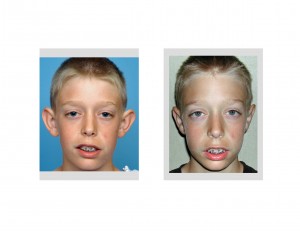The ear is a peculiar facial feature. While not existing on the face per se, it has a convoluted shape of hills and valleys that surround the ear canal. Like the nose, it is incredibly unique in its size and shape and each person has their own particular ‘ear print’. Despite its complexity, it is not paid much attention to unless it stands out in some particular way.
One of the ways the ear stands out, literally, is when it protrudes too far from the side of the head. While the angle of the ear to the side of the head should not be much greater than about 30 degrees, how it looks is more important than some measurement. When someone’s ear sticks out too far, it is a social judgment that one knows well…usually having been told (ridiculed) about it since when they started school. While some corrective ear surgeries (setback otoplasty) are done either before and after one starts their primary schooling, many are not done or considered until they are in their teenage years.
Whether a teen should undergo otoplasty or not is a personal decision. There is no medical reason whether one should be done or not or at any particular age. I have done otoplasties from age 2 to 78. The timing of corrective otoplasty is when one decides that it is a problem and they are tired of having their ears being a focus of attention or concern. Many teens are not prone to mention that their ears are a concern. Rather they will wear their hair long or pull it forward to cover them. Or even wear hats and other head attire that will hide them. Parents may often have a clue because they never see their teen’s ears. With today’s longer hairstyles and different head wear, it is easy for them to be camouflaged without being out of style.


Otoplasty in the teenage years can make a big difference at a time when conformity in appearance is exquisitely important. A simple one hour operation can provide a lifetime of relief. Few physical problems can be solved so simply and effectively in plastic surgery. It is one of those teenage physical concerns for which a ‘cure’does exist.
Dr. Barry Eppley
Indianapolis Indiana


